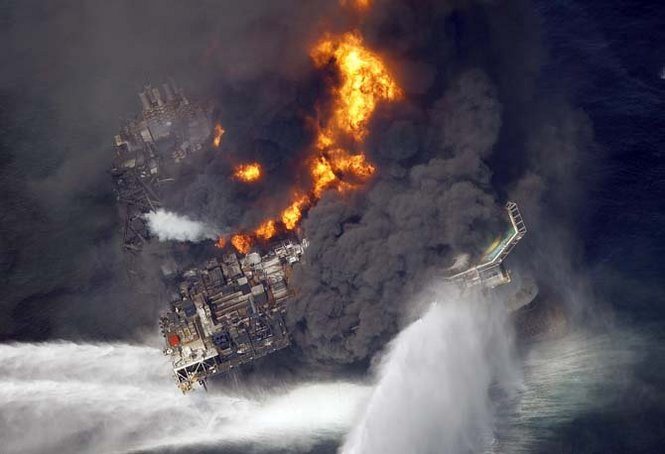By Tamara Wing
Staff Writer
One year has passed since Transocean’s Deepwater Horizon oil rig, leased by BP, exploded off the coast of Louisiana. The explosion killed 11 men who were working on the rig which burned for two days before sinking. Oil flowed into the Gulf waters for 153 days; 4.9 million barrels of oil were released into the Gulf waters, making the April 20, 2010 BP oil spill the largest oceanic release of oil in U.S. history. When the well was finally declared “effectively dead” by BP on September 17, the attention of the national media shifted elsewhere. For Gulf residents, however, the nightmare had only begun.
Human and Animal Casualties
It is estimated that only 10 percent of the oil has been consumed by microbes. Most of what remains in the Gulf has been treated with Corexit, the dispersant used by BP to break down the crude oil into smaller particles. Corexit is said to be four times more toxic to many species of wildlife than the oil itself. Kieran Suckling, executive director of the Center for Biological Diversity, describes a “chemical soup” (oil parts treated by the 1.8 million gallons of Corexit) that has sunk into the seabed, contaminating the ecosystem of the local marine life. Suckling estimates that over 6,000 sea turtles, 26,000 marine mammals (e.g. dolphins and porpoises), and 82,000 seabirds have died (and continue to die) as a result of the oil and chemical dispersants released into the Gulf. Corexit has also heavily impacted the health of exposed workers and residents. There has been a startling increase in the number of Gulf residents whose blood has high levels of cadmium and benzene; a dramatic rise in chemically-induced pneumonia, coughing up of blood, and loss of eyesight have also been blamed on the effects Corexit. The dispersant that has been used in the Gulf is banned in Europe; the Center for Biological Diversity now has a lawsuit pending to pressue the EPA to ban the use of these dispersants in the US.
Life After the Spill
Coastal towns where industry has traditionally been based in fishing and shipbuilding have seen unemployment rise to as high as 75 percent. Residents, who were already living in poverty, have had to weigh the risk to their personal health against eating the shrimp and other seafood affected by the spill; fishermen are reporting rising numbers of sport fish and seafood species showing ugly lesions even as the US government continues to claim that there are no safety concerns. The livelihoods of local fishermen are being decimated; fishing continues in the Gulf, but the industry has been severely impacted. Fishing companies are gradually downsizing, selling off equipment one piece at a time.
Area residents and businesses impacted by the spill have filed individual and class-action lawsuits against BP, seeking compensation for their losses and suffering. Because of the Oil Pollution Act which was passed after the Exxon Valdez oil spill, they were able to file their claims immediately following the disaster. One year later, however, less than 40 percent of the 176,000 claims have been processed, and only 10 percent of individual plaintiffs have received payment from BP; the average award is $21,000. 56 percent of those who have settled out of court, thus barring themselves from pursuing future action against BP, have received payment; the average settlement amount is $5,000 for individuals and $25,000 for businesses. Of the $20 billion pledged by BP, only $3.5 billion has been paid in compensation. Meanwhile, the CEO of Transocean, Steve Newman, was given a $400,000 bonus for his performance in 2010 which Transocean described as the “best year in safety performance in our company’s history.” Newman has promised to give part of his bonus to the families of the 11 rig workers killed in the initial explosion.




